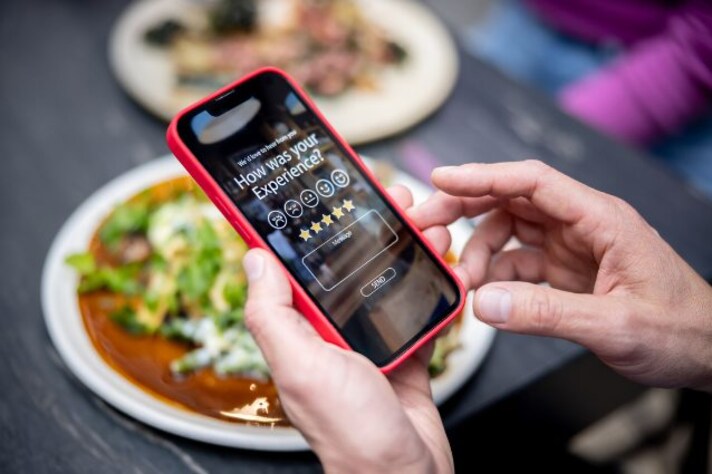How to Spot a Fake Restaurant Review (5 Ways to Never Get Fooled)
In today’s digital age, fake restaurant reviews are common, with up to 15% being fraudulent. These reviews can be overly generic, extreme, or posted in suspicious patterns. Spotting them involves looking for inconsistent details, unusual timing, and fake profiles. If you find a fake review, report it to the platform.

In the digital age, finding information about almost anything is just a few clicks away. Whether it’s the location of a restaurant, its opening hours, the menu, or what previous customers think of their experience, the internet has made it incredibly easy to plan the perfect dining out experience. Yet, there’s a fly in the soup: sometimes the glowing reviews that led you to book a table don’t quite match the reality, or worse, you might dismiss a gem based on dubious criticism. That’s the slippery world of fake reviews—a real headache for both diners and honest restaurateurs. So, how do you separate the wheat from the chaff? More importantly, what can you do if you stumble upon a suspicious review? Let’s dig in.
Why Fake Reviews Exist and How Prevalent They Are
The existence of fake reviews might not surprise you—after all, where there’s money, there’s usually a shortcut. Restaurants rely heavily on positive reviews to attract new customers, and unfortunately, some unscrupulous owners are more than happy to create a few (or a few hundred) glowing comments out of thin air. On the flip side, competitors or disgruntled ex-employees might try to tank a restaurant’s reputation with maliciously negative reviews.
The prevalence of fake reviews is alarmingly high. According to recent studies, up to 10-15% of all online reviews for restaurants are estimated to be fake. That's right, for every ten reviews you read, one might be as genuine as a three-dollar bill. This not only skews your perception but also damages the integrity of online platforms. It's like adding too much salt to a dish—it ruins the flavor for everyone.

The Many Faces of Fake Reviews
Fake reviews come in many flavors, just like a restaurant menu. There are the overly enthusiastic five-star reviews that sound too good to be true, and then there are the scathing one-star takedowns that feel suspiciously vindictive. Sometimes, these fakes are generated by bots, producing generic, repetitive comments across multiple restaurants. In other cases, they're written by real people hired to post positive or negative reviews, often with an alarming lack of detail or personal experience.
For example, you might come across a review that praises the “amazing atmosphere” of a restaurant in a neighborhood known for its cozy ambiance—but then realize that the same exact phrasing appears in reviews for five other restaurants. Or perhaps you’ll see a review that raves about the restaurant’s sushi, only to discover that the establishment doesn’t serve sushi at all. These are the tell-tale signs of fake reviews, created by someone who likely never set foot in the place.
How to Spot Fake Reviews
Spotting fake reviews can feel like playing detective, but it’s a necessary skill if you want to avoid being misled. Here are a few tips to sharpen your sleuthing skills.
First, pay attention to the language. Genuine reviews tend to have a mix of details—descriptions of the food, service, and atmosphere, along with personal anecdotes. Fake reviews, on the other hand, often sound generic or overly polished. If a review reads like it could apply to any restaurant, it’s probably not trustworthy.

Next, consider the timing and pattern of the reviews. If a restaurant suddenly receives a flood of glowing reviews within a short period, that’s a red flag. It’s the online equivalent of someone standing on a soapbox, shouting praise louder than the competition. Conversely, if a spate of negative reviews all appear around the same time, it could indicate a smear campaign.
Look for consistency across reviews. Genuine feedback often includes a balance of positives and negatives because no experience is perfect. If you see a series of reviews that are either all praises or all complaints without much substance, be skeptical. Also, check the reviewer’s profile. If they’ve only reviewed one place or have a history of leaving similar reviews across different businesses, their credibility is questionable.
Lastly, be wary of extremes. If a review is overly enthusiastic or excessively negative without much explanation, it could be fake. Real diners tend to provide nuanced feedback. After all, a restaurant’s lasagna might be fantastic, but that doesn’t mean the reviewer will describe it as “life-changing.”
What to Do When You Spot a Fake Review
So, you’ve spotted a fake review—what now? First, resist the urge to engage directly with the reviewer. Instead, report the suspicious review to the platform hosting it. Most review sites, like Yelp, TripAdvisor, or Google, have mechanisms for flagging fake content. They may not always act immediately, but every report helps in the fight against fraud.

If you’re a restaurant owner and discover that your business is the victim of a fake review, it’s essential to keep your response professional. Don’t engage in a public argument. Instead, reach out to the platform to have the review investigated. In some cases, especially if the fake reviews are part of a larger defamatory campaign, you might need to consult legal counsel.
And yes, posting fake reviews can have legal consequences. In extreme cases, individuals or companies found guilty of posting fraudulent reviews can face hefty fines. While jail time is rare, it’s not entirely off the table—particularly if the fake reviews are part of a broader fraudulent scheme. It turns out that writing a bad review just might land you in a bad situation.
;Resize,width=767;)
;Resize,width=712;)

;Resize,width=712;)
